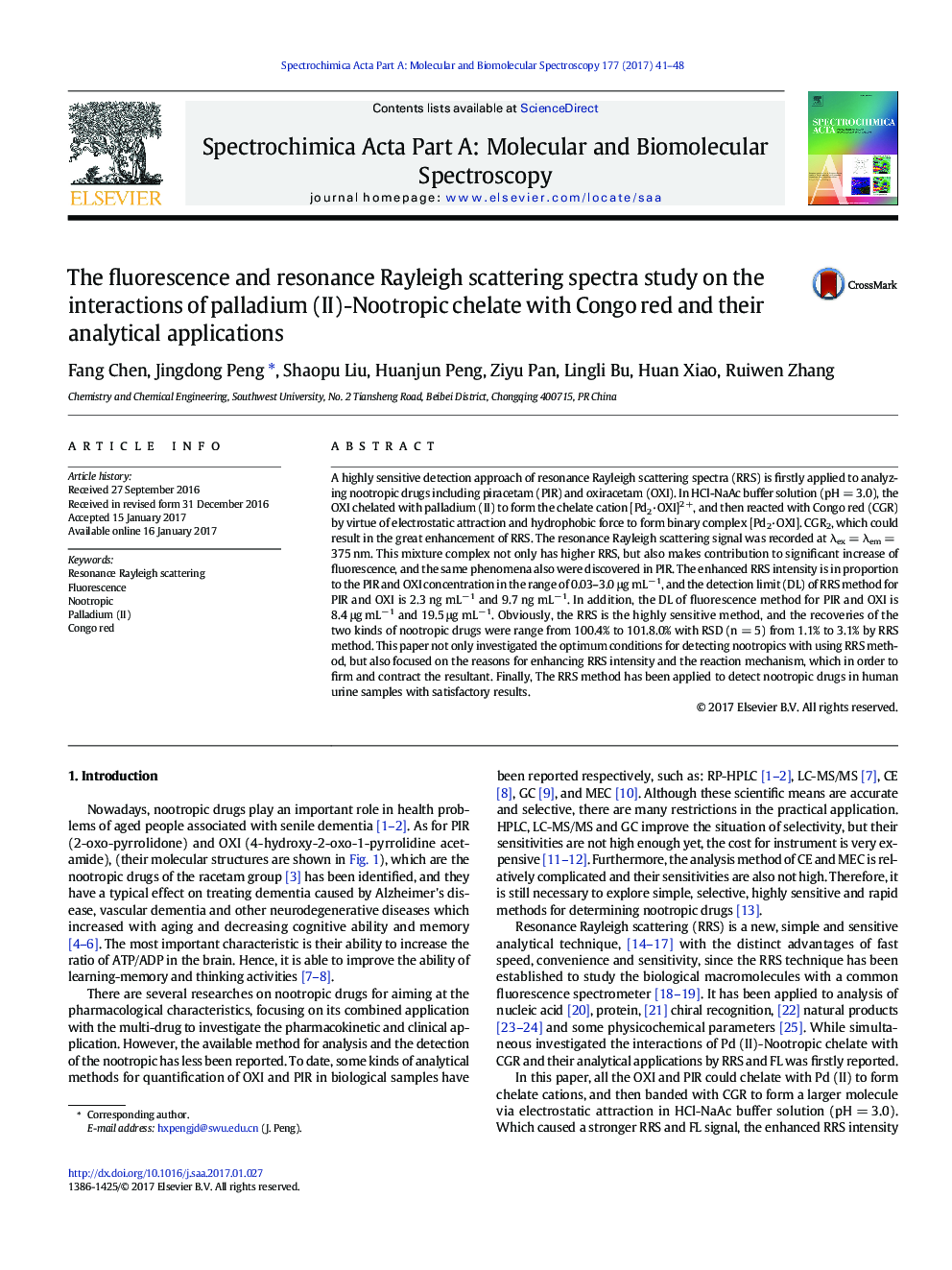| Article ID | Journal | Published Year | Pages | File Type |
|---|---|---|---|---|
| 5139993 | Spectrochimica Acta Part A: Molecular and Biomolecular Spectroscopy | 2017 | 8 Pages |
Abstract
A highly sensitive detection approach of resonance Rayleigh scattering spectra (RRS) is firstly applied to analyzing nootropic drugs including piracetam (PIR) and oxiracetam (OXI). In HCl-NaAc buffer solution (pH = 3.0), the OXI chelated with palladium (II) to form the chelate cation [Pd2·OXI]2 +, and then reacted with Congo red (CGR) by virtue of electrostatic attraction and hydrophobic force to form binary complex [Pd2·OXI]. CGR2, which could result in the great enhancement of RRS. The resonance Rayleigh scattering signal was recorded at λex = λem = 375 nm. This mixture complex not only has higher RRS, but also makes contribution to significant increase of fluorescence, and the same phenomena also were discovered in PIR. The enhanced RRS intensity is in proportion to the PIR and OXI concentration in the range of 0.03-3.0 μg mLâ 1, and the detection limit (DL) of RRS method for PIR and OXI is 2.3 ng mLâ 1 and 9.7 ng mLâ 1. In addition, the DL of fluorescence method for PIR and OXI is 8.4 μg mLâ 1 and 19.5 μg mLâ 1. Obviously, the RRS is the highly sensitive method, and the recoveries of the two kinds of nootropic drugs were range from 100.4% to 101.8.0% with RSD (n = 5) from 1.1% to 3.1% by RRS method. This paper not only investigated the optimum conditions for detecting nootropics with using RRS method, but also focused on the reasons for enhancing RRS intensity and the reaction mechanism, which in order to firm and contract the resultant. Finally, The RRS method has been applied to detect nootropic drugs in human urine samples with satisfactory results.
Related Topics
Physical Sciences and Engineering
Chemistry
Analytical Chemistry
Authors
Fang Chen, Jingdong Peng, Shaopu Liu, Huanjun Peng, Ziyu Pan, Lingli Bu, Huan Xiao, Ruiwen Zhang,
